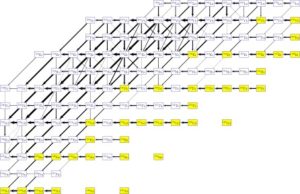
libnucnet is a collection of libraries developed at Clemson University by Brad Meyer and his collaborators for network calculation application. It is available under the GNU General Public License. Information about the code can be found here: https://sourceforge.net/projects/libnucnet.
NucNet-Tools is a set of codes based on libnucnet for post-processing network calculations. It provides tools useful for preparing the input data, running the calculations as well as analyzing the data and plotting the results. I use this code, combined with additional programs that are specific to my calculations, to investigate production of p-nuclei and sensitivity of the p-nuclei abundances to the nuclear reaction rates and stellar environment conditions.

